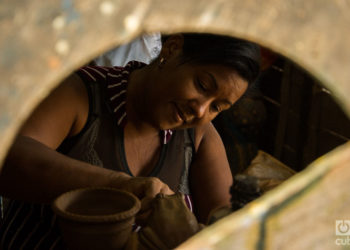Buffalos in Cuba
Buffalos arrived in Cuba more than twenty years ago. Two fundamental species graze in the pastures of the island: those of river and those of marsh, although today the first are the ones who prevail. Good meat and plenty of milk. These mammals eat almost anything. Of course, they require special care and attention. They are not docile like cows and do not believe in fences of barbed wires. When they are running out of food, the electric fences are the only thing that contains them. Photo: Miguel Ángel Romero. This year at the 20th International Food and Agriculture Fair FIAGROP 2017, the Buffalo Livestock Company El Cangre presented a project for the production of mozzarella cheese from the processing of buffalo milk. The project, according to Prensa Latina agency, will activate 20 dairies for the production of 4.7 million liters per year.





